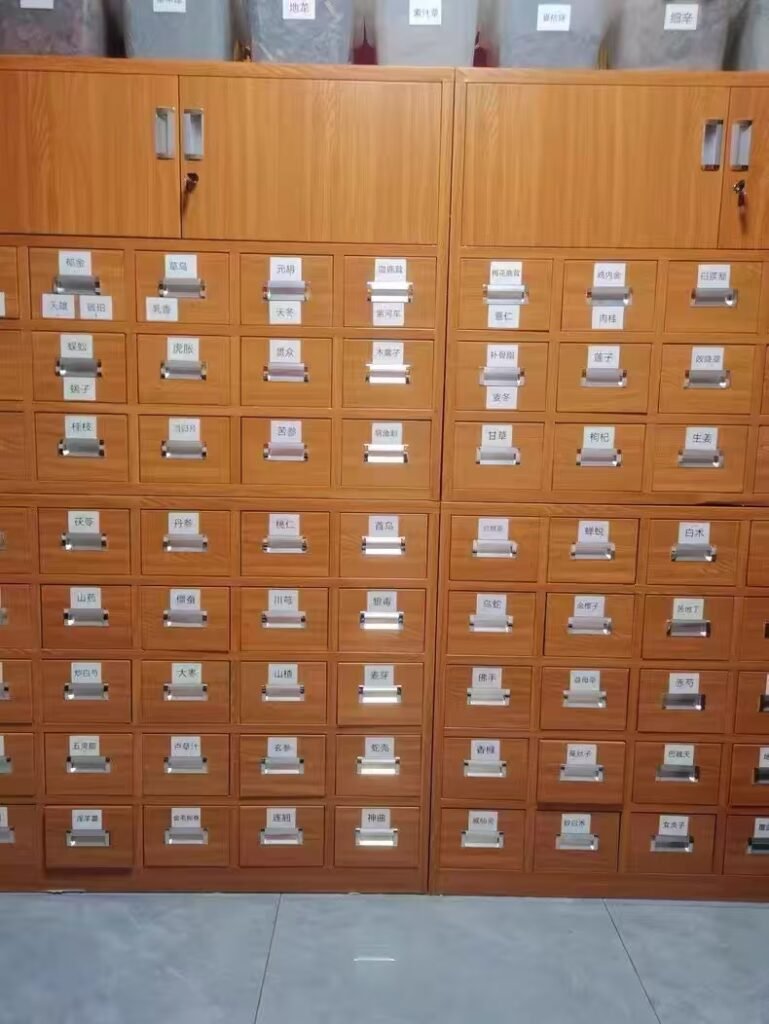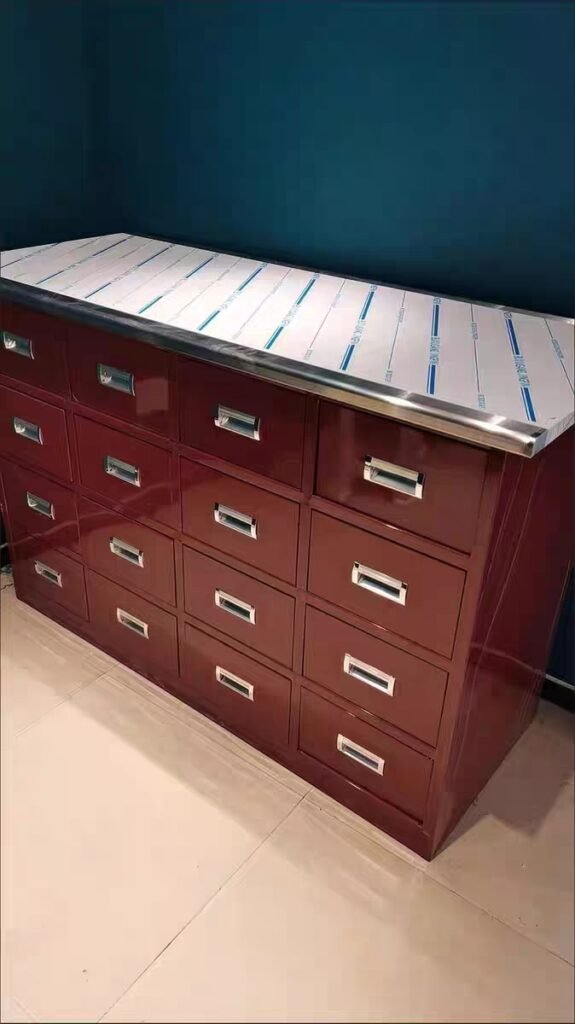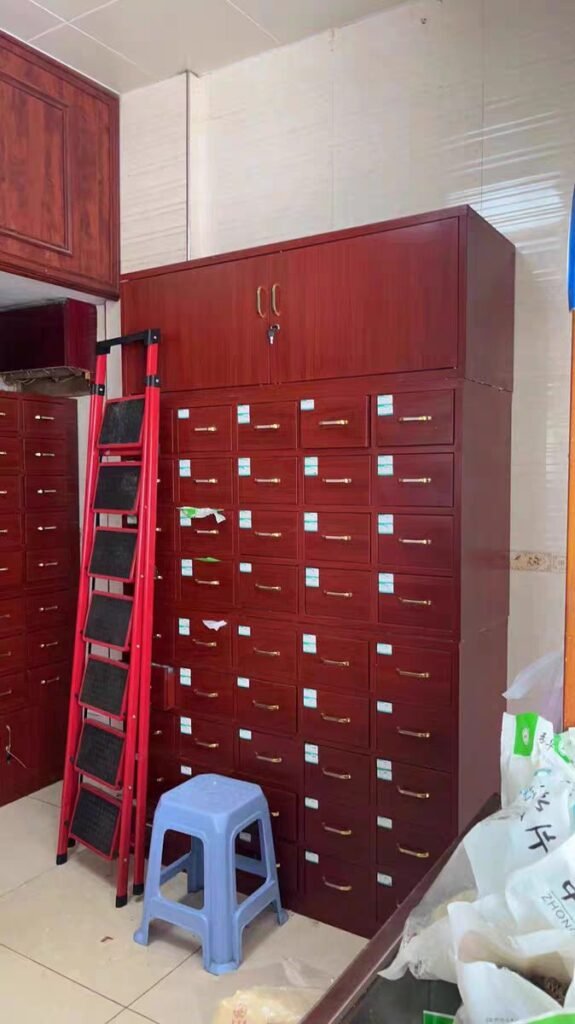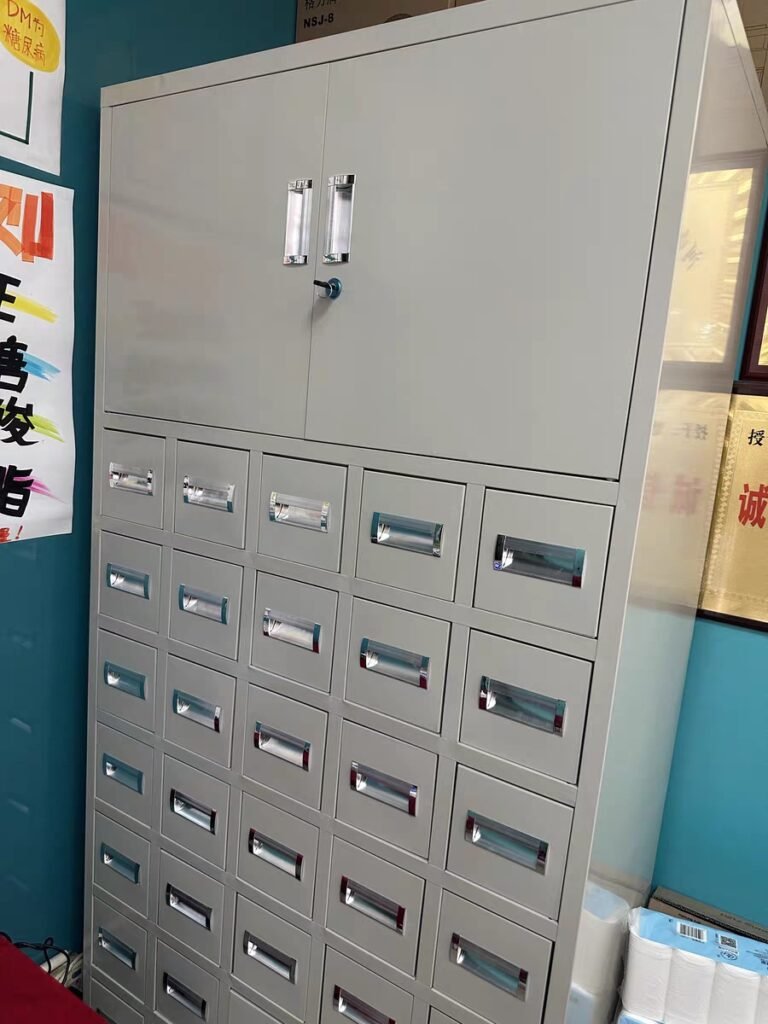Traditional Storage Solutions: Drawer Pharmacy Cabinets and Metal Lockers in New York Chinatown
The Cultural Heritage of Storage Solutions in New York Chinatown
New York Chinatown, with its bustling streets and rich cultural heritage, has long been a center for traditional Chinese medicine and herbal remedies. Among the many distinctive features of this historic neighborhood are the specialized storage solutions that have been essential to the practice of traditional Chinese medicine for generations. From drawer pharmacy cabinets to metal storage lockers and small traditional Chinese medicine cabinets, these storage units serve both practical and cultural purposes in the heart of Manhattan.

Drawer Pharmacy Cabinets: The Heart of Traditional Medicine Practice
Drawer pharmacy cabinets, known in Chinese as “yao gui” (medicine cabinets), are perhaps the most iconic storage solution found in New York Chinatown’s herbal pharmacies. These cabinets typically feature numerous small drawers arranged in a grid pattern, each carefully labeled with the name of a specific herb or medicinal ingredient.
The design of these cabinets is both functional and deeply rooted in tradition. Most traditional drawer pharmacy cabinets in New York Chinatown feature between 60 and over 100 small drawers, each measuring approximately 4-6 inches square. The drawers are typically constructed from wood, though modern versions may incorporate metal components for durability.
What makes these cabinets particularly fascinating is their organization system. The drawers are often arranged according to traditional Chinese medicine principles, with related herbs grouped together. Some cabinets follow the “five elements” theory, organizing herbs by their associated element (wood, fire, earth, metal, water), while others may categorize them by their medicinal properties or the part of the body they treat.

Metal Storage Lockers: Modern Adaptations in Traditional Settings
While wooden drawer cabinets remain popular, many establishments in New York Chinatown have incorporated metal storage lockers into their operations. These metal storage solutions offer several advantages in the busy urban environment of Manhattan, including enhanced durability, improved security, and better resistance to the city’s humid summers.
Metal storage lockers in Chinatown’s pharmacies typically serve different purposes than the traditional drawer cabinets. They are often used to store bulk supplies, valuable equipment, or sensitive materials that require additional protection. Many of these lockers feature combination locks or key locks, providing security for expensive herbs and equipment in high-traffic areas.
The integration of metal storage solutions alongside traditional wooden cabinets represents the adaptation of traditional practices to modern urban challenges. It’s a practical response to the unique demands of operating a traditional medicine practice in one of the world’s busiest cities.

Small Traditional Chinese Medicine Cabinets: Compact Solutions for Urban Spaces
Space is at a premium in New York City, and this reality has influenced the design of traditional Chinese medicine cabinets in Chinatown. Many practitioners utilize smaller, more compact versions of traditional medicine cabinets that can fit into the limited space available in Manhattan’s narrow buildings.
These small traditional Chinese medicine cabinets often feature a combination of drawers and cabinets, maximizing storage capacity while minimizing footprint. Some are designed to be wall-mounted, taking advantage of vertical space in small shops and clinics. Others may be freestanding but built to fit into corners or other underutilized areas.
Despite their smaller size, these cabinets maintain the traditional aesthetic and organizational principles of their larger counterparts. They often feature intricate carvings, traditional Chinese characters, and the same careful organization of medicinal ingredients that has been practiced for centuries.

The Craftsmanship Behind Traditional Storage Solutions
The creation of traditional Chinese medicine cabinets is a craft that requires skill, patience, and deep knowledge of both woodworking and traditional medicine. In New York Chinatown, several craftsmen continue to produce these cabinets using traditional methods, though many are now imported from China or other Asian countries.
Traditional cabinet makers use joinery techniques that have been passed down for generations, creating sturdy cabinets without the use of nails or screws. The wood is carefully selected for its durability and resistance to the city’s changing climate. Many cabinets are made from camphor wood, which naturally repels insects that might damage valuable herbs.
The labeling system is another aspect that requires expertise. Each drawer must be clearly labeled with the name of the herb in both Chinese characters and often in English or Pinyin romanization. The labels must be durable enough to withstand years of handling in a busy pharmacy environment.
Practical Applications in Modern Healthcare
While traditional Chinese medicine cabinets have historical and cultural significance, they also serve practical purposes in modern healthcare settings. In New York Chinatown, these storage solutions are used by acupuncturists, herbalists, and practitioners of integrative medicine who combine traditional Chinese approaches with Western medical practices.
The drawer system allows practitioners to quickly locate and access the specific herbs needed for custom formulations. Many traditional Chinese medicine treatments involve personalized combinations of herbs, and the organized drawer system makes it efficient to prepare these custom prescriptions.
Additionally, the secure nature of these cabinets helps maintain the potency of the herbs. Many traditional Chinese medicinal ingredients are sensitive to light, moisture, and air exposure. The cabinets provide protection from these elements, ensuring that the herbs maintain their medicinal properties.

Cultural Significance Beyond Storage
For many in New York’s Chinese community and beyond, these traditional storage solutions represent more than just functional furniture. They are symbols of cultural heritage and the continuity of traditional knowledge in a modern urban environment.
The presence of these cabinets in New York Chinatown serves as a visual reminder of the neighborhood’s cultural roots. They connect current practitioners to generations of herbalists who have come before them, preserving not just the physical herbs but the knowledge systems that govern their use.
For visitors to Chinatown, these cabinets offer a glimpse into the world of traditional Chinese medicine. They are often conversation pieces that spark interest in traditional healing practices and lead to greater cultural understanding.
Adapting to Contemporary Needs
As New York Chinatown continues to evolve, so too do the storage solutions used in its traditional pharmacies. Many practitioners are finding ways to maintain the traditional aspects of their medicine cabinets while incorporating modern conveniences.
Some modern adaptations include:
- LED lighting inside cabinets to improve visibility
- Climate control features to protect sensitive herbs
- Digital inventory systems integrated with traditional drawer systems
- Security features to protect valuable medicinal ingredients
These innovations demonstrate how traditional practices can adapt to contemporary needs without losing their essential character. They represent a balance between preserving cultural heritage and embracing practical innovation.
The Future of Traditional Storage Solutions in New York Chinatown
As interest in traditional Chinese medicine continues to grow in the United States, the demand for appropriate storage solutions is likely to increase. New York Chinatown, as one of the oldest and largest Chinese communities in North America, will likely remain at the center of this evolution.
We may see further innovations in cabinet design that blend traditional aesthetics with modern functionality. There may also be increased interest in sustainable materials and manufacturing processes, reflecting broader environmental concerns.
What seems certain is that these storage solutions will continue to play a vital role in the practice of traditional Chinese medicine in New York. They are not merely furniture but essential tools that enable practitioners to preserve and share traditional healing knowledge in the modern world.

Conclusion: Where Tradition Meets Urban Practicality
The drawer pharmacy cabinets, metal storage lockers, and small traditional Chinese medicine cabinets of New York Chinatown represent a fascinating intersection of tradition and adaptation. They are practical solutions to the challenges of storing and organizing medicinal ingredients in an urban environment, while also serving as symbols of cultural heritage and continuity.
For practitioners of traditional Chinese medicine, these cabinets are essential tools that enable them to continue their healing work in the heart of one of the world’s most modern cities. For visitors and residents alike, they offer a tangible connection to traditional knowledge and cultural practices that have been preserved and adapted in New York’s unique urban landscape.
As New York Chinatown continues to evolve, these traditional storage solutions will likely continue to adapt, finding new ways to serve both practical and cultural purposes in the changing urban environment. They stand as testament to the resilience of traditional practices and their ability to find relevance in contemporary settings.
